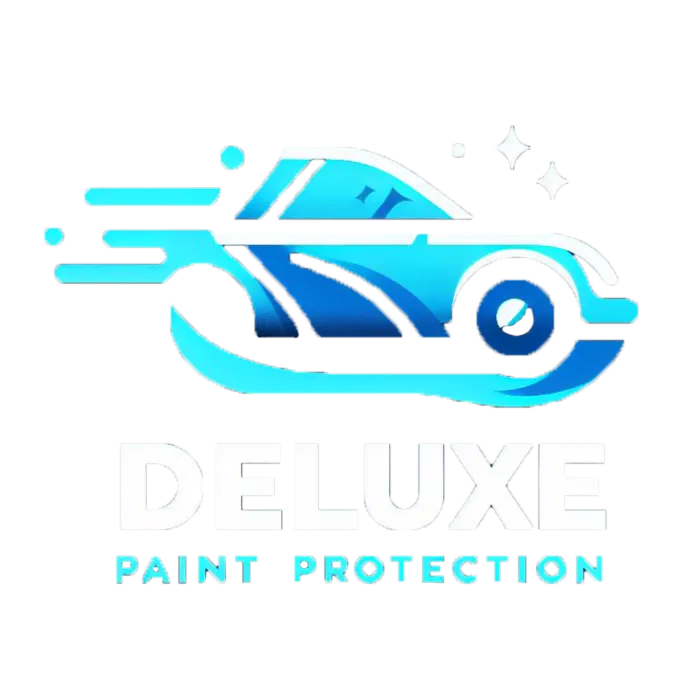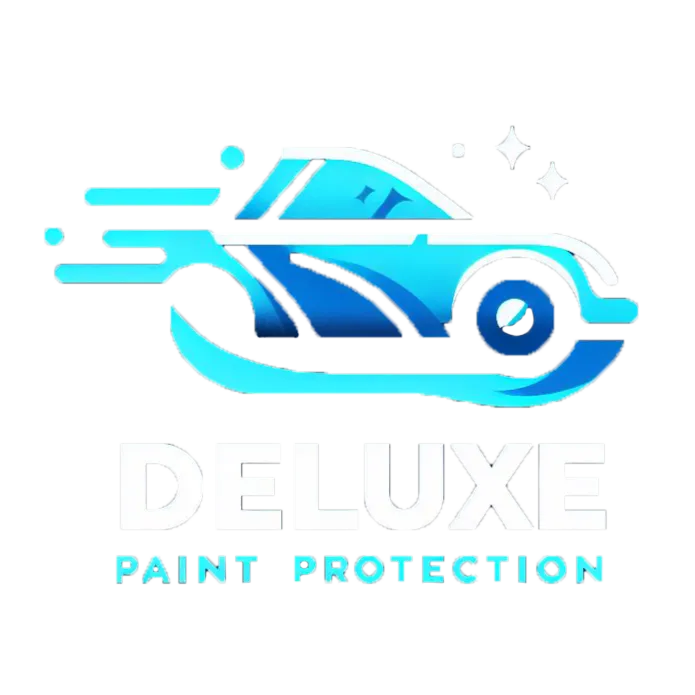
Is Paint Protection Film (PPF) Worth It?
Is Paint Protection Film (PPF) Worth It?
PPF is all the rage in the auto detailing world, especially among car enthusiasts who want to keep their vehicles looking brand new for years to come. It’s a clear, durable film designed to safeguard your car’s paint from scratches, rock chips, and environmental damage, offering a level of protection that other options can’t match. With so many choices available—like ceramic coatings and vinyl wraps—you might wonder, is Paint Protection Film worth it? The short answer is yes—if you’re looking for unmatched protection and a long-term solution to preserve your car’s paint, aesthetics, and value, PPF is an excellent investment. Whether you own a luxury car, a daily driver, or a prized sports car, PPF offers a reliable shield against the wear and tear of everyday life.
In this post we’ll cover everything you need to know about PPF for cars including the benefits, drawbacks, maintenance tips and how it compares to other protective solutions.
What Is Paint Protection Film?
Paint Protection Films are a thermoplastic urethane film applied to your car’s painted surfaces. Originally developed for military use to protect helicopter blades, PPF has become a popular choice for automotive paint protection.
PPF provides:
Scratch Resistance: Protects your car from minor scratches, swirl marks and abrasions.
UV Protection: Prevents paint from fading from sun exposure.
Self-Healing: Many modern PPFs can repair minor scratches and swirl marks with heat.
Whether you’re driving on the highway or parking in tight spots, PPF acts as a barrier against debris, road salt, bird droppings and other elements that can damage your car’s finish.

What Are The Advantages Of PPF?
Damage Protection: PPF acts as a barrier against rock chips, light scratches and swirls from everyday driving or improper washing. This is especially important for high impact areas like the front bumper and hood.
Self Healing: One of the best features of modern PPF is self healing. Minor scratches and swirls disappear when exposed to heat, sunlight or warm water and your car’s paint stays smooth and flawless.
UV and Chemical Resistance: PPF protects your car’s paint from UV rays that can cause fading or discoloration over time. It also shields your car from contaminants like bird droppings, tree sap and road salt that are hard to remove and can damage unprotected paint.
Looks Great: PPF is almost invisible when installed correctly and maintains your car’s original paint color and shine. Or if you want a custom look some PPF’s come in matte.
What Is The Downside Of PPF?
While PPF is great for many, it’s not all good. Here are the downsides:
High Initial Cost: Paint protection film installation can be pricey, with costs ranging from a few hundred dollars for partial coverage to several thousand for full-body applications.
Professional Installation Required: Installing Paint protection film requires expert skills to ensure a flawless application.
Potential Yellowing or Discoloration: Lower-quality PPF may yellow or discolor when exposed to prolonged sunlight or environmental pollutants.
But many of these can be fixed by taking preventative measures, such as committing to regular maintenance and looking after the Paint Protection Film. By cleaning the film with the right products, not using abrasive materials and checking for damage or wear, you can keep the PPF in great condition, long term protection and keep the car looking brand new.

How Much Does PPF Film Cost?
Size of Your Vehicle
Big vehicles like SUVs or trucks cost more as they require more PPF material and labor. Smaller cars are cheaper but complex shapes or intricate designs can add to the cost.
Brand of Film
Premium brands like XPEL or 3M are more expensive but offer better durability, clarity and self healing. Cheaper films save money upfront but often yellow, peel or need to be replaced sooner.
Level of Coverage
Full body PPF is the most coverage but most expensive due to more material and labor. Partial coverage focuses on high impact areas, more affordable with essential protection.
Partial Coverage (e.g. front bumper, hood): $500-$2,000
Full Coverage (entire vehicle): $2,500-$8,000+
Keep in mind, premium films with self-healing and hydrophobic properties will cost more but perform better.
How Does PPF Look After 5 Years?
With proper care and maintenance high quality Paint Protection Film (PPF) can still be crystal clear, glossy and intact 5 years on. But there are many factors that can affect how it looks over time. Let’s break it down:
Film
The type of PPF you choose plays a big part in how it holds up 5 years on.
Premium PPF: High end films are designed with advanced technology that makes them more resistant to yellowing, discoloration and other forms of degradation. These films have UV resistant layers and self healing properties that help extend its life.
Lower Quality PPF: Budget options will degrade faster and show signs of discoloration, peeling or yellowing within a few years.
Choosing a reputable brand and a professional installer will ensure the film stays intact and looks good over time.
Maintenance
Regular cleaning and proper care is key to keeping PPF looking its best:
Cleaning: Use pH neutral car soap, soft microfiber cloth and avoid using abrasive materials that can scratch or dull the film.
Wax and Sealants: If you want to add extra gloss and hydrophobic properties to the film, use PPF safe waxes or sealants.
Timely Cleaning: Remove contaminants like bird droppings, tree sap or bug splatter as soon as possible as they can leave stains or marks if left untreated.
A well maintained PPF will retain its transparency and gloss longer and your car will look great years down the line.
Environmental Exposure
The environment your car is in will affect the longevity and appearance of PPF:
Harsh Sunlight: Continuous exposure to UV rays will degrade the film faster especially if it doesn’t have UV protection. This is more noticeable in areas with intense sunlight all year round.
Rain and Pollution: Acid rain and air pollution will dull the film over time if the car is not washed regularly.
Road Conditions: Cars that drive on gravel roads or harsh weather conditions will show more wear on the film.
In less harsh environments or with covered parking the film will be in better condition for a longer time.
By 5 years You May See:
Minimal Wear: Small imperfections like micro scratches or slight fading especially in high impact areas.
Clear and Glossy Finish: For high end PPF the overall clarity and gloss will be well maintained with proper care.
Functional Protection: Even if minor cosmetic wear is visible the PPF should still provide good protection against scratches, chips and other damage.

How to Maintain Paint Protection Film (PPF)?
Proper maintenance is key to extending the life of Paint Protection Film (PPF) and keeping it looking new. Here’s how to do it:
Regular Washing
Washing your car every 1-2 weeks helps prevent dirt, grime and contaminants from building up on the PPF surface. Use a pH neutral car soap to avoid harsh chemicals that can degrade the film’s properties. Always wash your car with a soft microfiber wash mitt or sponge to avoid scratching the film.
Avoid Harsh Chemicals and Methods
Harsh chemicals such as abrasive cleaners or household cleaners should never be used on PPF as they can damage the surface or its layers. Similarly stiff brushes, scouring pads and automatic car washes can scratch or lift the edges of the film and compromise its integrity. Instead use gentle hand washing or touchless car washes which minimizes the risk of damaging the film.
Waxing And Sealants
To maintain and enhance the PPF’s gloss and hydrophobic properties you can use PPF safe waxes or sealants. These products add an extra layer of protection and keep your car looking shiny and clean for longer periods. But avoid waxes that contain harsh solvents or petroleum based ingredients as these can degrade the film over time.
Spot Cleaning
Contaminants like bird droppings, tree sap and bug splatter should be removed as soon as possible to avoid permanent etching or staining on the PPF. For spot cleaning use a gentle cleaning spray or a diluted car soap solution with a microfiber cloth. If the contaminants are tough to remove let the cleaner sit on the affected area for a few minutes before wiping gently.
Check For Damage Regularly
check your PPF for damage to catch any issues early. Look for lifted edges, scratches, bubbling or any signs of wear that can compromise the film’s integrity. If you see any damage address it immediately by consulting a professional for repair or replacement. If you ignore these issues dirt or moisture can seep under the film and damage the paint underneath.
PPF vs Vinyl Wrap vs Ceramic Coating
Ceramic Coating Or PPF? It Depends On Your Priorities:
If physical damage from rock chips, scratches and debris is your main concern, PPF is the way to go. Its tough, impact resistant layer protects the paint from daily wear and tear, perfect for high impact areas like the front bumper, hood and side mirrors.
If you want an exceptional gloss, hydrophobic properties and easier cleaning, Ceramic Coating is the way to go. It makes your car look better by making it shine more and water, dirt and grime slide off easier, less washing required.
For most car owners, the best is a combination of PPF and Ceramic Coating. PPF on high risk areas for physical protection and Ceramic Coating on the whole car for gloss and easy maintenance. Together, they have the best of both worlds.
Summary
Paint Protection Film is a great investment for car owners looking to extend the life, looks and resale value of their cars. By learning about the benefits, drawbacks and maintenance requirements you can decide if it is necessary to apply paint protection film for your car.
At Deluxe Paint Protection in Chantilly, VA we specialise in installing PPF to protect your car paint and keep your painted surface looking like new. Whether you’re looking to PPF your entire car or specific areas we also offer paint correction services to get your car looking flawless before we apply. Contact us today to learn more or schedule an appointment for professional PPF installation.
FAQ: Does PPF Affect Resale Value?
Yes, PPF can increase resale value. A well protected car exterior tells potential buyers that the car was well maintained, making it more desirable and valuable.
FAQ: Does PPF Damage Paint When Removed?
No, PPF does not damage your car’s paint when removed professionally. In fact it often leaves the paint in better condition than the unprotected areas. However, improper removal can cause adhesive residue or peeling, so it’s best to consult a professional.





